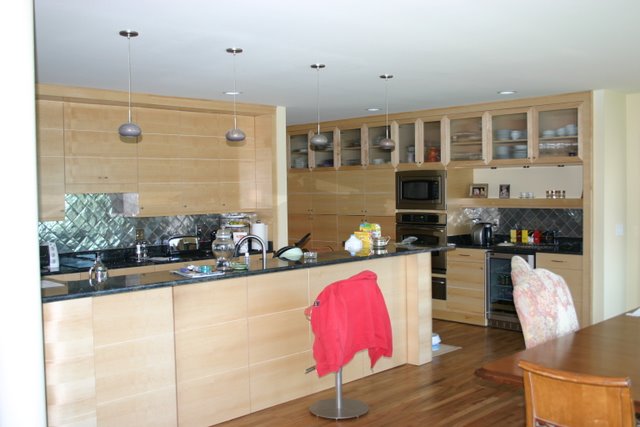Managing Layout for Mechanicals
Who's responsible for marking the locations of pipes, wires, et cetera during a kitchen remodel? Cabinetmakers discuss the reasons that some will take on managing this problem, and others won't.February 27, 2013
Question
How many believe it's your responsibility to mark out electrical, plumbing and HVAC? I've always believed it's the sub's responsibility to work off my cabinet plans and the GC's responsibility to double check/verify. That's how the majority of my GCs work (the rest don't have me out until all the above is already in and then we plan around it). Speaking to new construction here.
Forum Responses
(Business and Management Forum)
From contributor P:
It is the responsibility of the GC. How could anyone think that the cabinetmaker should be responsible for that?
From contributor K:
I once had a customer ask me when I was going to run the ductwork for the hood through the ceiling, through the attic and out the eve end of the house, and when I thought I'd have the clapboards replaced and painted.
On a serious note, I make sure that the under cabinet lighting wiring is right and help coordinate any electrical in islands and peninsulas.
From contributor C:
Many of the jobs I work don’t have any plans written up except for the cabinet plans, so I do go out and mark for electric and plumbing, but I charge for it and carry no responsibility for another tradesmen's work.
I am oversees and things are done a little different here, but not exclusively so! Yes, I do get asked about doing the plumbing and electrical myself. Many clients simply don't understand who should be responsible for what.
From contributor J:
I usually mark it out for them. Not because I think it's my responsibility, but because it's a pain when you show up to install and stuff is in the wrong place.
From contributor D:
I'm with contributor J, and usually meet with the other trades to discuss placement of outlets, switches, wiring for under cabinet lights and plumbing. This helps the job go smoother and there are no surprises when we come to install.
From contributor R:
What would you say your average kitchen full of cabinetry costs?
From contributor J:
Last year $14900 average.
From contributor E:
It doesn't matter to me too much who's responsible, as I wouldn't count on a GC (and even more so a sub), to get a coffee order right, never mind plumbing and electric locations. I do mostly renovations, but I did have a job with a plumber who thought it was a good idea to run the drain and supply pipes 6' out from the corner, along the surface of the wall, to where the sink was going?! New construction with everything laid out in the prints. Go figure.
Then there was the GC who on an addition couldn't figure out how to center a window between 2 walls… Only off about 8", though. She didn't think it mattered, even though the sink and cabinetry was designed around the window being centered.
I'm sure we could run this thread to a ridiculous length with stories of contractors. My only point is to cover your butt and double check before install if at all possible. It's better to have a little advance notice that things are not going to work right.
From contributor D:
These days most work is between 10 and 15K. Once upon a time BR (before recession), I was able to sell more expensive jobs. It doesn't matter to me how much the job is, though I will still try to provide good customer service. This, I believe, includes coordination with all involved parties. A $10,000 kitchen is just as big a deal to the average person as a $60,000 one is to a wealthy man. It is very stressful to the customers and all efforts to help the job go smoother are generally appreciated.
I don't feel that it is a big deal for me to spend an hour or so ( out of all the time involved to build and install the average kitchen) talking to the other trades. Often the cabinet guy is the only central repository of needed info, with our shop drawings.
Good customer service will help you to rise above the fray. Having said all that, I am a small shop (2 people) and don't do much new construction.
